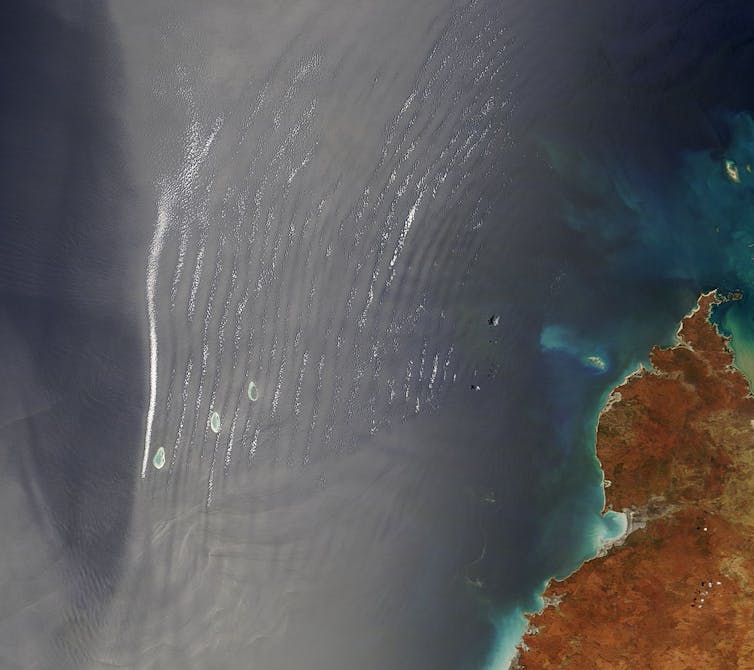The lights are mainly back in Spain, Portugal and south of France after a generalized power failure on Monday.
The power failure caused chaos for tens of millions of people. He closed traffic lights and automatic ticket distributors, stopped public transport, cut the telephone service and forced people to dinner huddled around candles as the night fell. Many people have been trapped in trains and elevators.
The Spanish Prime Minister Pedro Sánchez said that the exact cause of the power failure remains to be determined. In early relationships, the operator of the Portugal grid was cited as blaming the event on a rare phenomenon called “induced atmospheric vibration”. Ren would have since refuted this.
But what is this vibration? And how can energy systems be improved to alleviate the risk of generalized breakdowns?
How many weather conditions affect electricity?
Time is a major cause of disruption of electricity supply. In fact, in the United States, 83% of the power cuts reported between 2000 and 2021 were allocated to events related to weather conditions.
The ways in which the weather can affect the supply of electricity is multiple. For example, cyclones can lower the transmission lines, heat waves can place too high demand on the grid and bush lights can shave stations.
Wind can also cause vibrations of transmission lines. These vibrations are characterized either by a high amplitude and a low frequency (known as “galloping driver”), or a low amplitude and a high frequency (called “wind vibrations”).
These vibrations are an important problem for grid operators. They can exert increased stress on network infrastructure, which potentially causes power outages.
To reduce the risk of vibration, grid operators often use wire stabilizers called “original bridges shock absorbers”.
What is “induced atmospheric vibration”?
Vibrations of electric pipes can also be caused by extreme temperature or atmospheric pressure changes. And this is a hypothesis on what caused the recent widespread failure in the Iberian Peninsula.
As the Guardian initially reported Portugal Ren, saying:
Due to extreme temperature variations inside Spain, there were abnormal oscillations in very high voltage lines (400 kV), a phenomenon called “induced atmospheric vibration”. These oscillations have caused synchronization failures between electrical systems, resulting in successive disturbances through the interconnected European network.
In fact, the “induced atmospheric vibration” is not a commonly used term, but it seems likely that the explanation was aimed at referring to the physical processes that climatologists have been knowing for some time.
In simple terms, it seems to refer to waves movements or oscillations in the atmosphere, caused by sudden changes in temperature or pressure. These can be triggered by extreme heating, large-scale energy versions (such as explosions or bush fires) or intense weather events.
When a part of the surface of the earth warms up very quickly – due to a heat wave, for example – the air above it warms up, expands and becomes lighter. This growing warm air creates a pressure imbalance with fresher and denser more dense air. The atmosphere responds to this imbalance by generating waves, a bit like the ripples spreading on a pond.
These pressure waves can travel through the atmosphere. In some cases, they can interact with electrical infrastructure – in particular high -distance transmission lines at high voltage.
These types of atmospheric waves are generally called gravity waves, thermal oscillations or acoustic-gravity waves. Although the expression “induced atmospheric vibration” is not officially established in meteorology, it seems to describe this same family of phenomena.
What is important is that it is not only high temperatures that cause these effects – it is the speed and inequality that temperature changes in a region. This is what puts the atmosphere in motion and can vibrate the power lines. Again, however, it is not yet clear if this is what was hidden behind the recent breakdown in Europe.

Jeff Schmaltz / Nasa
More centralized, more vulnerable
Understanding how the atmosphere behaves under these conditions becomes more and more important. As our energy systems become more interconnected and more dependent on long -distance transmission, even relatively subtle atmospheric disturbances can have disproportionate impacts. What could have seemed a marginal effect is now a growing factor in the grid resilience.
Under the growth of environmental and electric constraints, centralized energy networks are dangerously vulnerable. The increase in the electrification of buildings, the rapid absorption of electric vehicles and the integration of intermittent renewable energy sources have exerted unprecedented pressure on traditional networks which have never been designed for this level of complexity, dynamism or centralization.
Continue to rely on centralized grid structures without fundamentally rethinking resilience endangers entire regions – not only technical defects, but environmental volatility.
The way of avoiding such catastrophic risks is clear: we must adopt innovative solutions such as community micro-networks. These are decentralized, flexible and resilient energy networks that can operate independently if necessary.
The strengthening of the autonomy of local energy is the key to building a secure, affordable electrical system and ready for the future.
The European failure, whatever its immediate cause, demonstrates that our electrical networks have become dangerously sensitive. The fact of not responding to these structural weaknesses will have very worse consequences than those suffered during the cocovio pandemic.

